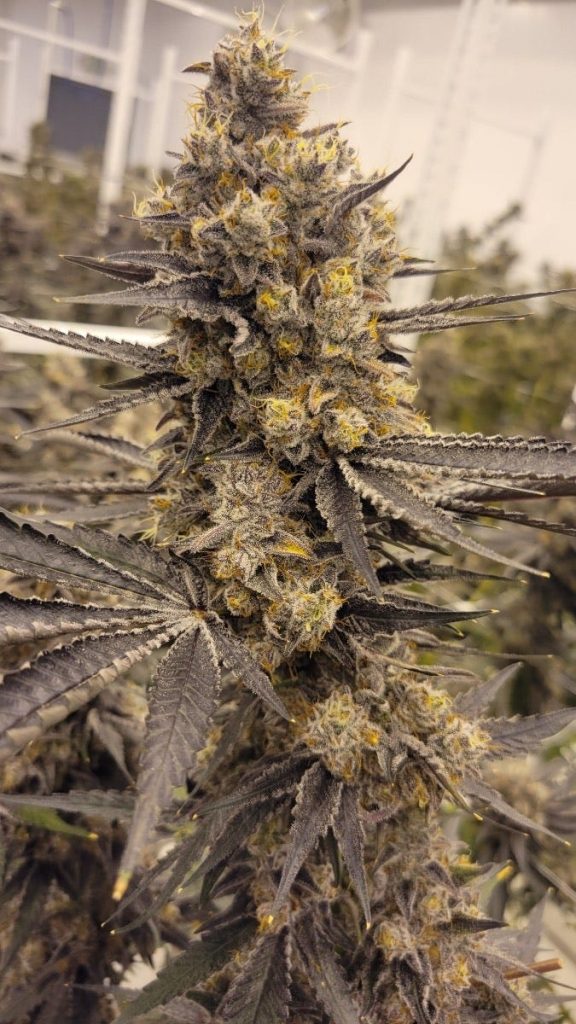386 Years Before Zkittles

TWO LIPS by Hoodie Allen wrote this for me.
Another one, this Tuesday-Thursday schedule sucks! To be continued, but first…
I love to read, Michael Pollan’s “The Botany of Desire” is a wonderful, shorter book! Bees, cannabis, tulips—free your eyes or ears and check it out.
History seems to always repeat itself, and we can always learn from it. Let’s go full nerd for a few, and I don’t mean Blue Nerds.
Three of the most notable market crashes in history are the Dot Com implosion, the Tulip Market Crash of 1637, and the ailing cannabis market. Although the occurrences of these events vary in different historical eras, there are still striking similarities that depict the volatility of investments. In this article, we will explore the historical background of each event, the economic factors that contributed to the crashes, and how the cannabis market can manage to survive despite its challenges.
The Dial-Up Daze
The Dot Com era refers to the period during the 1990s when businesses centered around the internet were booming. Some of you were born shortly after this with a Nextel in your hand.

Chirp Chirp Chirp. nooooooooooooooooooooooooo!
Investors had high expectations for the internet and its potential to change the way business is conducted. However, many of the internet-based companies failed to deliver on their promises, leading to the Dot Com bubble bursting in 2000. The market crash resulting from this bubble burst led to the loss of $5 trillion in market value.
One of the primary factors that contributed to this market collapse was that investors placed overly optimistic expectations on internet-based companies (i.e., cannabis gold rush). This created a demand for shares of these businesses to increase beyond what their actual profitable capabilities were. As a result, investors were often investing in startups that had no real business model or profitability, resulting in significant financial losses when they inevitably collapsed.

386 years ago give or take a few months
The Tulip Market Crash of 1637 is often regarded as the first economic bubble in history. During this period, tulips were the most highly-valued commodity in the Netherlands. People were willing to pay exorbitant amounts of money for tulip bulbs. Prices for tulips began to skyrocket, and some people began trading the bulbs like stocks.
During the height of the market, tulip bulbs would change hands multiple times in a single day, and each transaction would result in a profit for the seller. However, this euphoria was not sustainable. When the price of tulips suddenly dropped in February 1637, many investors lost a considerable amount of money in the crash that followed. The primary factor that led to the market crash was an oversupply of tulips, and the realization that they were just flowers and not worth the outrageous prices that they had been fetching.
Last but not least, Cannabis Market
The cannabis market is an emerging sector reliant on a dynamic and evolving legislative environment, and a consumer that is hungry for products. Similar to internet-based startups in the Dot Com era, many investors placed unrealistic expectations on the cannabis market. In recent years, cannabis legalization has become a topic of political debate that has shifted from a narcotic to an accepted medical treatment.
This shift in thinking led to an influx of cannabis-based companies and exponential growth in the industry. However, changes in legislation from state to state and country to country have made it difficult for these companies to develop a solid business model and maintain profitability. As the regulatory environment around marijuana evolved, the cannabis market had a sudden and sharp drop in valuation. Many investors lost huge amounts of money because they invested in companies that ultimately could not withstand fluctuating legislative environments.
(I like the Weedmaps stock MAPS. Well, actually, I like the people back in charge of the company.)
The shitshow continues, especially in Canada, California, New York, and __________ your states here.

Sherbreath at Red Bud Roots Facility Buchanan Mi.
Surviving the Storm
While the cannabis market may appear to be experiencing an ailing period, the industry is still poised for growth despite challenges. There are several reasons why this sector is positioned to thrive in the coming years.
Firstly, the growing acceptance of cannabis as a medically relevant plant is leading to an increase in research and knowledge. As more discoveries are being made about the various components of the plant, it is slowly becoming a topic of discussion on a global scale. This growing interest and legitimacy directly corresponds to the unlocking of major market opportunities. With a rapidly growing base of knowledge, the cannabis industry is uniquely poised to tap into opportunities that may lead to sustained growth.
For instance, a cannabis study on pancreatic cancer has already shown positive results, highlighting the important role that cannabis can play in medical treatment.
Secondly, the legal landscape is evolving. The number of states and countries where marijuana is legalized is increasing. As a result, this has resulted in a growing market for medical and recreational use, which is crucial to the cannabis industry’s growth. As more states and countries legalize cannabis, businesses operating in this space will be able to expand their consumer base and scale their operations while making the industry more mainstream.
Thirdly, research and development are advancing, leading to innovation in the sector. The cannabis industry is attracting scientists and researchers from various backgrounds, such as chemistry and botany. This brings with it a lot of innovation and advancements in technologies that can propel the cannabis market towards sustainability. The cannabis industry is also experimenting with different products that create a wide range of new avenues for revenue generation, such as pills, vaporizers, edibles, and ointments, among others.
Finally, the cannabis industry benefits from being part of the growing alternative healthcare sector. With the rise of alternative healthcare methods and increased focus on wellness, the cannabis sector is well-poised to benefit. As more people become interested in holistic treatments and health, businesses operating in the cannabis sector can leverage this trend to grow their market share.
In summary, while the cannabis industry is facing challenges in the short term, it has significant potential for long-term growth and success. As the industry continues to evolve and innovate, businesses that can adapt and stay ahead of the curve will be able to thrive and capitalize on the emerging opportunities, thereby contributing to the growth of the industry as a whole.

Markets overheat, markets crash, and become leaner as unrealistic expectations evolve. The cannabis industry is no exception; the financial world is volatile, and margins are thin, subject to external factors that can cause significant losses.
However, despite these challenges, I still believe the cannabis sector is poised for remarkable growth. With an evolving legislative environment, increasing knowledge about the plant, innovation, and a growing consumer base, the cannabis market is well-positioned to thrive. The cannabis industry will need to continue taking a responsible and sustainable approach to operations (the waste in packaging is vomitous), focus on nurturing trust, and remain focused on financial literacy to survive the storms.
In summary, the cannabis market is poised for long-term growth, and businesses that can adapt and stay ahead of the curve will be able to thrive and capitalize on emerging opportunities, contributing to the growth of the industry. However, cultivation and dispensary operations need to focus on sustainability, minimize waste, and improve trust with consumers for long-term success.
The next letter will come from a new address… goodbye Substack
 0
0